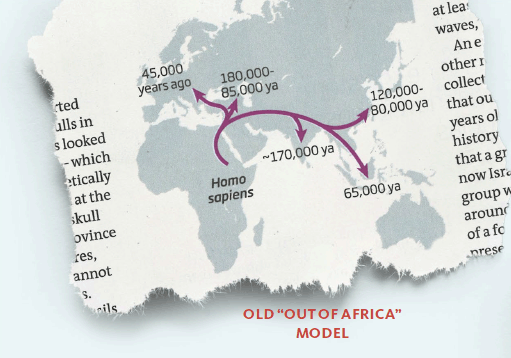
Out of . . . Asia?
Quick Takes
Most secular anthropologists have long repeated this narrative about human history: we first appeared in Africa. But this supposition has taken another hit with the discovery of ancient stone tools at the Shangchen site in central China. The excavation uncovered 96 artifacts, including pieces of stone with sharpened and pointed edges. What makes these artifacts special is the age associated with their setting—they are supposedly 2.1 million years old, which is at least 250,000 years older than any other Homo artifacts found in Eurasia to date.
The Shangchen artifacts are the latest in a long line of findings that have often been dismissed and ignored because they contradict the evolutionary “out of Africa” theory. In 1978, for instance, a skull (260,000-years-old, based on secular dating assumptions) was found in the central province of Shaanxi. All these conflict with the standard story that early humans left Africa less than a million years ago and that modern Homo sapiens left Africa around 120,000 years ago and didn’t enter Asia until around 60,000 years ago.
As the evidence piles up, many scientists continue to dismiss these findings because they don’t make sense within the predominant narrative. Another idea is gaining traction, however, especially in China: Homo sapiens evolved in Asia, making it the actual “cradle of life.” A more moderate view, proposed by Maria Martinon-Torres, director of the National Research Center on Human Evolution in Spain, is that ancestors of modern humans (ancestral hominins) originated in the centrally located Middle East and spread out to Africa and Asia from there.


Closer to the Truth?
New Scientist recently published a revolutionary new model of human origins (right) that replaces the old model (left) based on fossils discovered in Asia.
Minus evolutionary dates and terms, the map of the new model resembles one creationists have used for years, based on Genesis 11’s account of humans’ spread from Babel in the Middle East.
Evidence for “out of Asia” doesn’t surprise creationists. Genesis clearly states that after the flood, mankind first settled in Babel, located in the Middle East, before spreading to Africa and the rest of the earth. These secular dating methods are built upon assumptions that need to be corrected to reflect the Bible’s historical facts. The real dates fall within the 6,000-year time frame given in God’s Word, and the earliest fossils will very likely be found near the Middle East.
Answers Magazine
November–December 2018
Aging is a result of Adam’s fall. But can we do anything to ease the effects of aging or extend our life span?
Browse Issue SubscribeRecommended Resources

Answers in Genesis is an apologetics ministry, dedicated to helping Christians defend their faith and proclaim the good news of Jesus Christ.
- Customer Service 800.778.3390
- © 2024 Answers in Genesis






